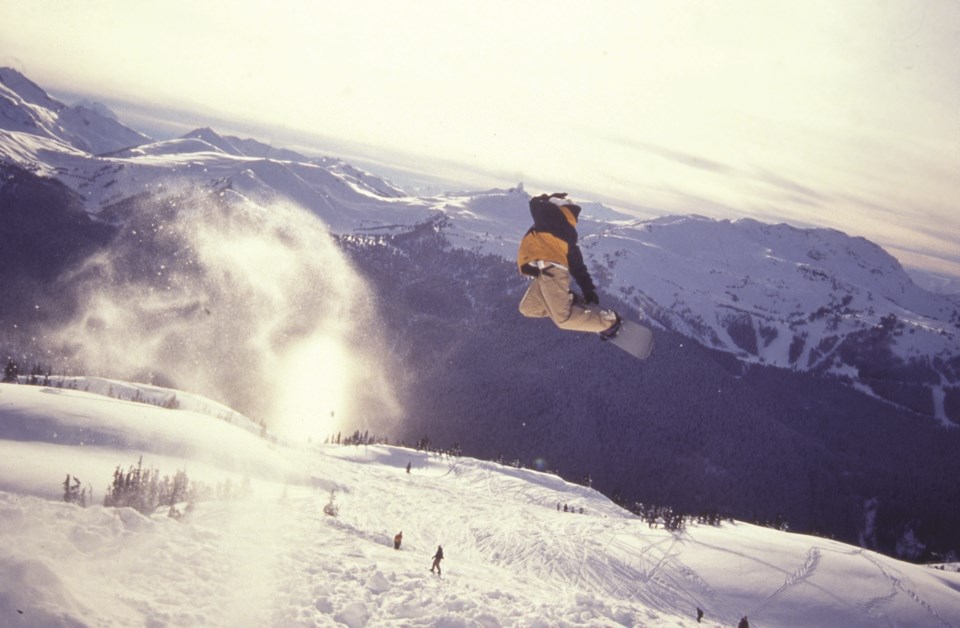Despite skiers and snowboarders charging down the mountain together today, there was a time when single-plankers were strictly not allowed. Skier complaints and safety concerns resulted in both Whistler Mountain and Blackcomb Mountain remaining closed to snowboarders until the late ’80s. Snowboarders were forced to ride smaller, undeveloped hills, head to the backcountry, or hike up the mountain while avoiding the watchful eye of mountain staff.
The acceptance of snowboarding was slow because of the perception that snowboarders were dangerous, uncontrolled and uncivilized. The laid-back alternative lifestyle of snowboarders often clashed with that of skiers, and it was not uncommon for skiers to hurl disdain at snowboarders when they were finally allowed on the mountain.
Early snowboarders to Whistler tell stories about being spat on, chased by snowcats, and getting shovels thrown at them. As Ken Achenbach remarked, “We were called menaces to society—it was wicked, man.” All a snowboarder had to do to grind the gears of some skiers was wake up in the morning. Even Hugh Smythe, Blackcomb’s general manager, was derided when the decision was made to welcome snowboarders to Blackcomb for the 1987-88 season.
Special rules for snowboarders in resort areas were commonplace at this time. In some resorts, before they were allowed on the lifts, snowboarders had to agree not to use foul language. Similar to many East Coast resorts, Blackcomb went a step further. Unlike skiers, snowboarders were initially required to pass a proficiency test to be licenced to ride Blackcomb. The test cost about the price of a day pass and snowboarders had to prove they could turn both ways and stop safely. A certificate was presented upon passing which allowed the recipient to load the lifts with their board.
Aerials were also originally banned on Blackcomb, with lift tickets confiscated from those who dared leave the ground. Blackcomb was a popular freestyle mountain, but riders were required to keep an eye out for patrol when practising for fear of losing their passes.
It may be hard to believe in the age of triple cork 1440s, but all inverted aerials were initially also banned in snowboard competitions due to concerns over spinal cord injuries. It was not unusual for professional snowboarders to deliberately disqualify themselves in competitions by pulling inverted aerials, including the crippler, in protest of this rule. The rules were eventually changed to prevent medals being awarded only to those who followed the rules and showcased the tamest tricks.
As a new sport, the snowboarding community in Whistler was small and tight-knit. Being so outnumbered, snowboarders would instantly be best buds with anyone else riding a board. This did not last long, however; snowboarding was the fastest growing sport in the 1990s, and despite the growth slowing, the community today is so big there is no way anyone could know every snowboarder on the mountain.
For more on the history of snowboarding, join us for our first in-person event for 2022. In this Whistler Museum Speaker Series we will be talking about the history of snowboarding in Whistler with local snowboarding legends Ken Achenbach and Graham Turner.
The event begins at 7 p.m. on Monday, March 28. Tickets are $10 ($5 for museum members) and will be available at the Whistler Museum from March 14. We look forward to seeing you there!




